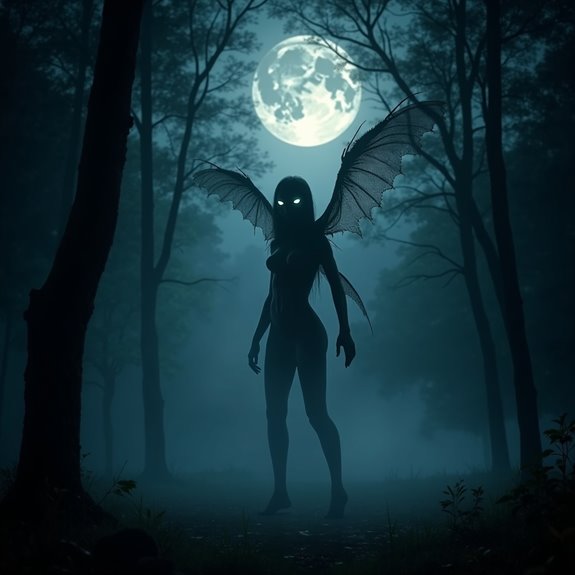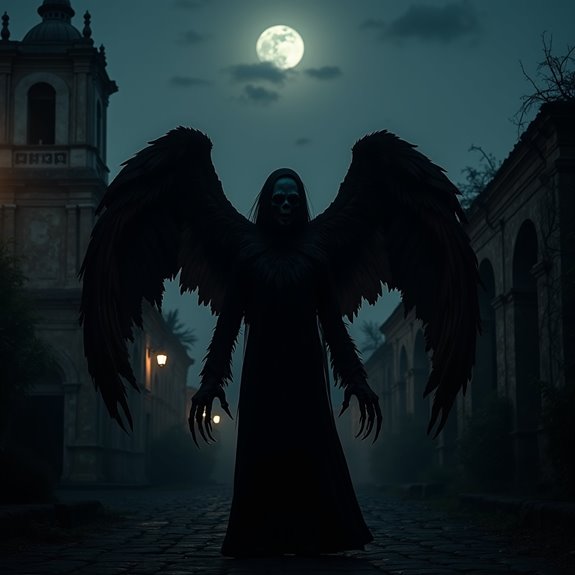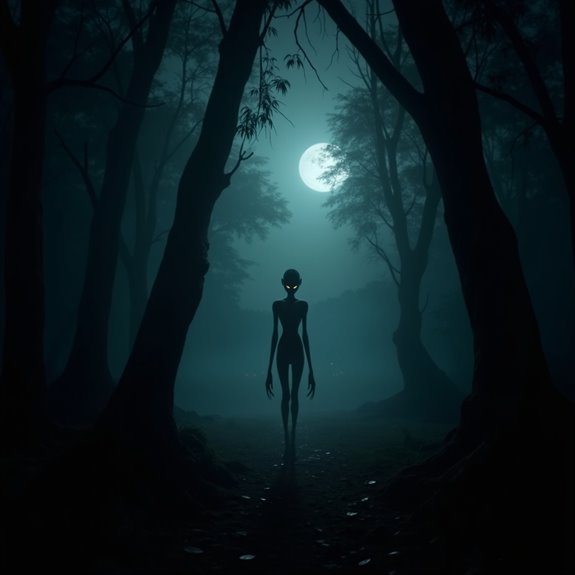The Aswang: Philippines’ Shapeshifting Monster
The aswang, a fascinating figure in Philippine folklore, captures attention with its eerie ability to shapeshift. This terrifying creature, often portrayed as a woman by day and a monster by night, has deep roots influenced by Spanish colonialism. Its predatory nature emphasizes societal fears, particularly surrounding motherhood and morality. As tales of sightings and encounters weave through modern culture, questions arise about the realities behind these frightening legends. What truly lies beneath this enduring myth?
Introduction

In the heart of Philippine folklore lies the aswang, a creature that captures the imagination with its eerie ability to shapeshift. Stories of this enigmatic being stretch across generations, weaving through the vibrant tapestry of local culture. Often depicted as a woman by day and a terrifying monster by night, the aswang embodies fear and superstition, providing a sense of caution among communities. Traditionally, it preys on the weak, specifically targeting pregnant women and unsuspecting children. Villagers share accounts of sightings, combining elements of horror with morality tales, ensuring that awareness of its presence endures. The aswang serves not only as a formidable figure in folklore but also as a reflection of societal fears and cultural values that continue to resonate today.
Spanish Colonial Influence

The arrival of Spanish colonizers in the 16th century profoundly influenced Philippine folklore, including the lore surrounding the aswang. Spanish missionaries sought to convert the indigenous population to Christianity, often branding local beliefs as superstitions. This clash between indigenous and colonial narratives resulted in a blend of cultural elements. The aswang transformed through the lens of Spanish influence, evolving from a general spirit entity into a more distinct shape-shifting monster. The colonizers emphasized its sinister attributes, associating the aswang with witchcraft and heresy. This depiction solidified fear and suspicion among communities, making the aswang a powerful tool in enforcing religious conformity. Over time, the fusion of these narratives helped to shape the modern understanding of the aswang in Filipino culture.
Notable Cases or Sightings

Stories of aswang sightings have persisted throughout the Philippines, often fueled by the fears instilled during the Spanish colonial period. One notable case occurred in the 1950s in the province of Capiz, where locals reported seeing a creature with large wings, monstrous fangs, and staring eyes. Witnesses claimed they heard unsettling noises at night, which they attributed to the aswang. In another instance from 1992 in a small barangay in Negros Occidental, villagers described a mysterious figure that transformed from a dog into a woman, causing panic. Sightings often coincide with unexplained disappearances or livestock deaths, reinforcing deep-rooted beliefs in the aswang’s influence. Such tales continue to shape local culture, keeping the legend alive through generations.
Common Theories or Explanations
While many dismiss the aswang as mere folklore, various theories seek to explain its enduring presence in Filipino culture. Some scholars suggest the aswang represents societal fears, embodying anxieties about the unknown and the dangers lurking in rural areas. Others argue it’s a personification of cultural values, illustrating the consequences of betrayal and wrongdoing. Additionally, the aswang legend may stem from historical realities, such as diseases misunderstood in colonial times. Some theorists also propose that these stories evolved to reinforce community bonds, fostering a sense of collective identity. Through shared tales of the aswang, families and communities create cautionary narratives, emphasizing morals while providing a thrilling sense of connection to their heritage. These explanations highlight why the aswang remains significant today.
Frequently Asked Questions
What Are the Different Types of Aswang in Filipino Folklore?
In Filipino folklore, various types of aswang exist, including the manananggal, who separates her upper body at night; the tikbalang, a horse-headed creature; and the kapre, a tree-dwelling giant. Each one’s terrifying in unique ways.
How Are Aswang Portrayed in Modern Media and Literature?
Modern media and literature portray aswang as complex characters, blending horror with cultural commentary. They’re often depicted as misunderstood beings, challenging traditional perceptions while enchanting audiences with their eerie allure and tragic backstories.
What Rituals or Practices Protect Against Aswang?
Communities employ various rituals, like placing garlic and salt around homes, drawing protective symbols, or wearing sacred amulets. They believe these practices create barriers against the aswang’s malevolence, keeping their families safe from harm.
Are There Any Similarities With Monsters in Other Cultures?
Many cultures feature similar monsters, like the European vampire and the Native American skinwalker. These creatures often share traits, such as shapeshifting and nocturnal hunting tendencies, reflecting universal fears of the unknown and predatory darkness.
How Has the Perception of Aswang Evolved Over Time?
Over time, perception of the aswang shifted from fearsome folklore to a cultural symbol. Today, many see them as misunderstood figures, representing both traditional beliefs and modern interpretations, reflecting society’s evolving relationship with local mythology.


